Affiliate links on Android Authority may earn us a commission. Learn more.
5G: When will your smartphone get it?
Published onJune 17, 2018
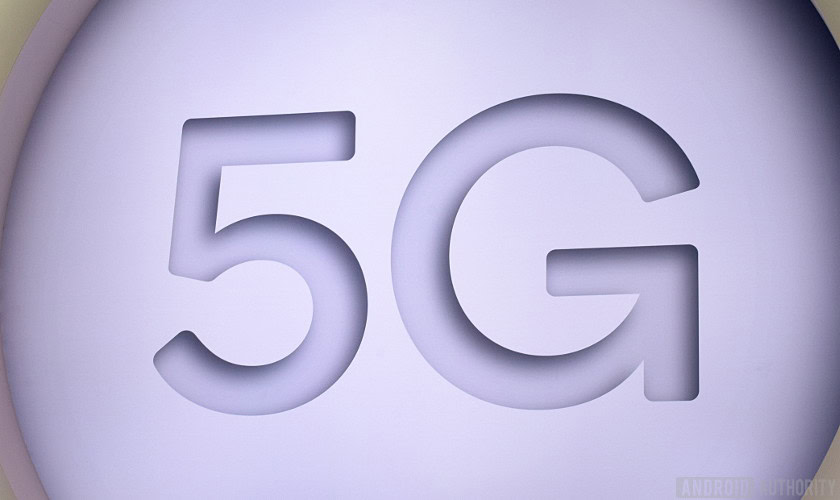
5G is the next big thing in mobile communications. It promises faster speeds and lower latency, and opens the door to a whole new set of use cases for smartphones and well beyond. However, we’re still in the early stages of network preparation for the next-gen standard. We don’t even have our first compatible 5G phones yet. So when will consumers actually get to use 5G?
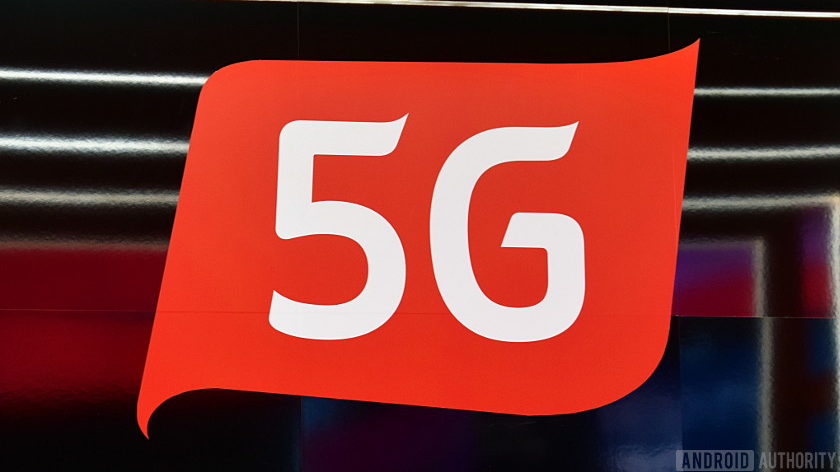
Smartphone manufacturers are targeting 2019 as the earliest possible launch date for their first true 5G phones, but those will certainly be at the premium tier of the market. Mainstream handsets will be a year or two behind, at least. HUAWEI said it’s targeting a Q3 2019 release. ZTE is being a little more ambitious with an early 2019 date penned in. A Moto Mod for the Z3 Play could bring support earlier still. However, other manufacturers, including industry leaders Apple and Samsung, are keeping their plans under wraps. We imagine we’ll see compatible 5G phones from most manufacturers at some point in 2019, based on official partnerships for Qualcomm’s X50 modem.
Read Next: Forget mmWave, Wi-Fi is the real 5G
That timeframe is backed up by Ericsson’s latest Mobility Report, which expects the first 5G ready devices to appear in early 2019. However, the graphic below expects these products to only support parts of the Non-Standalone 5G NR specification, with sub-6GHz support appearing first, followed by mmWave-ready handsets later in the year. It will likely take even longer for Standalone compliant devices to appear, but this means networks can accelerate deployment.
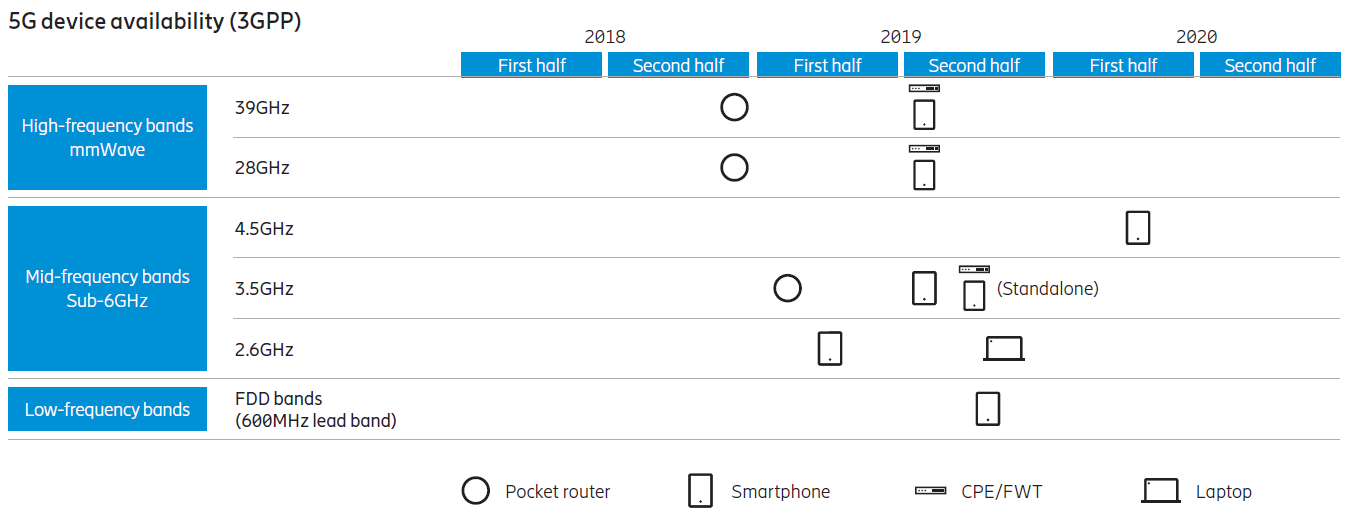
Even so, being first to market isn’t very important if the networks aren’t switched on. Only a small section of consumers will bother to future proof that far in advance. Consumers won’t see the benefits until 5G networks are actually switched on, which will happen in some countries sooner than in others.
The first 5G smartphones are expected in 2019.
US 5G roadmap
U.S. carriers are targeting the most ambitious launch plans they look for the next big differentiator to grab new subscribers. All four major carriers have announced plans, and some have even accelerated their roadmaps (and claims) to get ahead. Fixed wireless services based on 5G are expected to launch in the second half of 2018, while the first mobile 5G services based on 3GPP standards are expected in late 2018.
Verizon is promising its first 5G network will be online before the end of 2018, although the company is targeting home use first. Sacramento has been named as the first commercial market, and between three and five others are also expected to go live before the year’s end. However, Verizon will rely on a “proprietary” version of 5G at first to accelerate its rollout before adopting the global 5G standard later in the year. Let’s hope the company sticks to its word.
The soon to be merged Sprint and T-Mobile won’t be far behind, offering the full standard by the end of 2018-early 2019. New York City, Phoenix, Kansas City, Atlanta, Chicago, Dallas, Houston, Los Angeles, and Washington D.C. will be first ports of call for Sprint. T-Mobile also previously boasted 30 cities will be next-gen ready by the end of 2018.
US carriers are planning ahead, rolling out 5G in time for compatible phones to arrive.
AT&T is playing a more dubious marketing game, having already launched its “5G Evolution” technology in over 100 locations. This is really just faster LTE. AT&T’s actual 5G plans will be limited to just twelve planned locations by the end of 2018, with more coming online over 2019.
The major U.S. carriers are all looking to launch their fifth generation networks ahead of any smartphones that can actually make use of it. There had better be a batch of 5G-ready handsets announced in early 2019 or those networks are going to be sitting idle for a while.
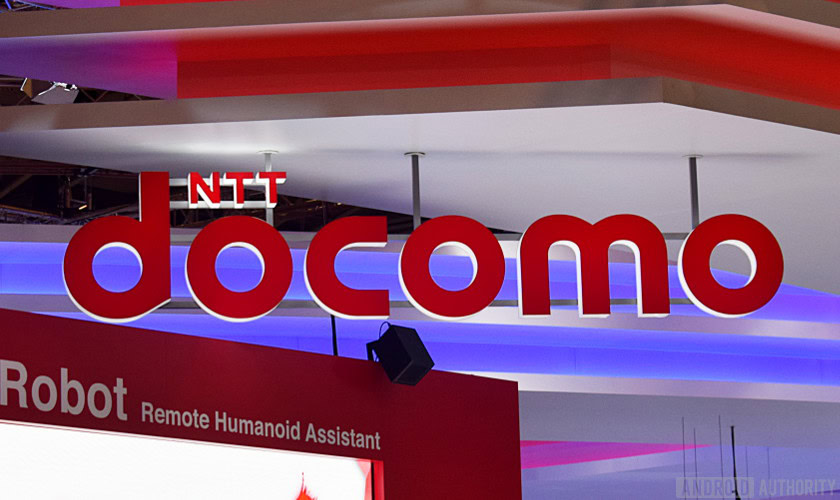
Ambitious Asia
Japan and South Korea have been leading infrastructure tests throughout the 5G development cycle and will be right up there with the U.S. when they deploy.
South Korean carriers have agreed to build a single 5G network to keep infrastructure costs down and speed up deployment, planning its spectrum auction for June. Commercial deployment has been accelerated to March 2019, with a nationwide rollout complete by 2022.
Japan’s NTT DoCoMo and Softbank have been major investors in the standard so far and are continuing to conduct numerous trials ahead of their rollouts. The 2020 Olympics are the next target for 5G millimeter wave trials in dense urban areas, and an agreement between Nokia and NTT DoCoMo will see commercial services begin later that year.
China is quickly becoming a major 5G player, tipped to accelerate past its Asian rivals and compete with the U.S. for deployment time. The country is home to major telecom infrastructure companies like HUAWEI and ZTE, which will provide equipment to carriers around the world. China has also invested $180 billion into mainland infrastructure, four times Japan’s investment. China Mobile is trialing its services in major cities this year and plans a full commercial launch in 2020.
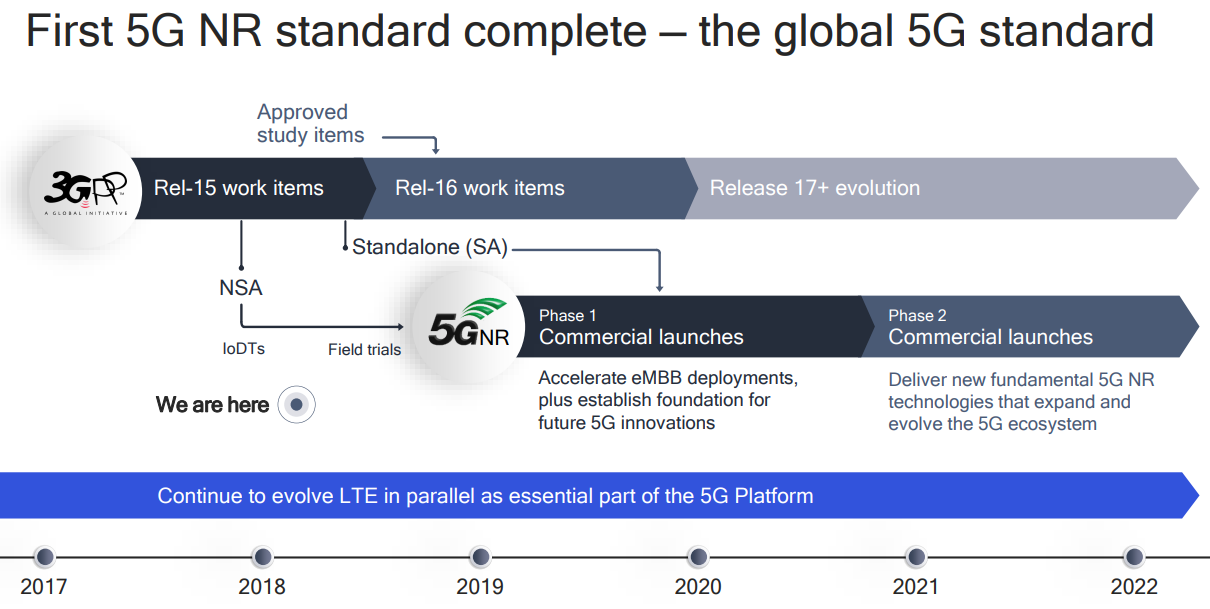
Europe trails the leaders
Europe has been much slower than the rest of the world at starting its first trials, due to a lack of regulatory insight and low investment. HUAWEI 5G base stations just received certification in Europe, paving the way for commercial launches.
At the end of last year, European telecommunications ministers unveiled their 5G roadmap for the block. The planning lacks any major detail and many specifics are up to member states and local companies to implement, but even the co-operative elements lag behind other regions. Technical harmonization across spectrum bands isn’t scheduled to begin until 2019, with low-frequency 700MHz assignment scheduled for 2020 and availability expected even later in 2022.
The first 5G city anywhere in the EU is expected to go online sometime in 2020, with a wider rollout scheduled to take place between then and 2025. Given the different infrastructure and financial capabilities across the block, a wide target is expected, but Europe is clearly moving much slower than the U.S. and Asia.
The U.K. has started its spectrum auction process, which saw close to 1.4 billion pounds (~$1.9 billion) paid out by Vodafone, O2,Three, and BT-owned EE — double the initial expectation. Carriers in the country have conducted a few trials, but commercial carrier plans are thin on the ground. EE touts August 2019 as its earliest possible launch date for a London deployment.
5G won’t be in full swing until 2023 or later
Carriers may be switching on their next-gen networks as early as this year, but it’s going to take considerably longer before the technology reaches out from major cities and to populations at large. Of course, those that get started first will see the benefits over the coming decade. As a result, North America is expected to see the fastest growth in 5G subscriptions by 2023, where Ericsson estimates almost half of all consumers in the region will have options for a fifth generation carrier plan.
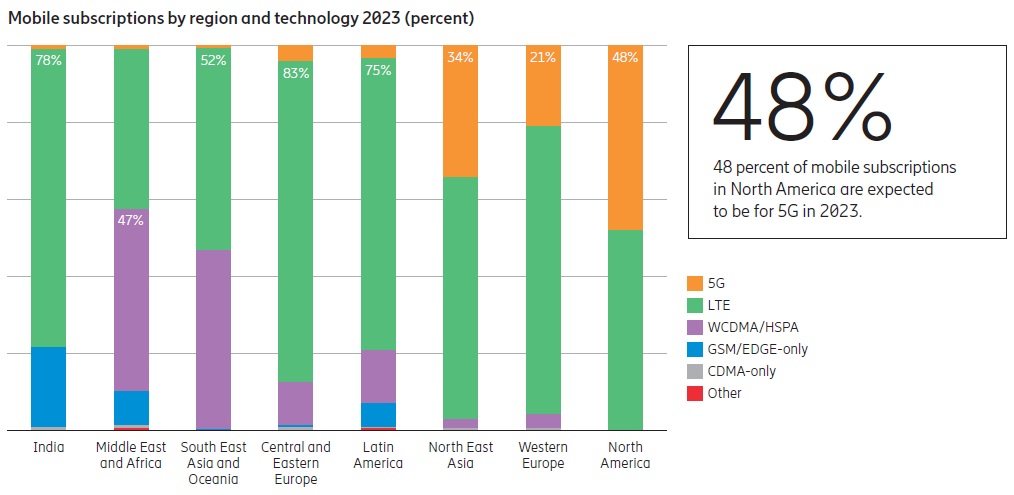
Northeast Asia is expected to have the next largest subscriber base, with around 34 percent of customers on board by 2023. This is due to the technological leadership of South Korea and Japan, as well as the major investments of China. Western Europe sits behind at 21 percent, owing to its slower preparation. India — one of the world’s largest mobile markets — is notably lagging on this adoption chart, with a minimum number of subscribers come 2023. The country is expected to see a later adoption than others, with commercial 5G not expected until 2022 at the earliest. Furthermore, GSM/EDGE-only remains the dominant technology across the country more broadly, and the current focus is on expanding LTE availability.
This is a longterm forecast and the numbers could change. However, it serves as a reminder that the rollout of faster networks is going to occur gradually over the next half decade and beyond. Don’t believe the marketing hype; it won’t just be a matter of flicking a switch. Much of the world won’t benefit until much later in the technology’s cycle. Partly this is due to investments and access to cutting-edge radio technology, but it’s a network upgrade issue. Current LTE networks are the backbone for the transition.
By 2023 in the US, there's a 50/50 chance you'll have a 5G phone and subscription.
Next-generation 5G phones and subscriptions will only be available at the premium end of the market for awhile, too. Networks and handsets may arrive as early as next year, but they’re going to be expensive.
5G won’t arrive in earnest until the technology becomes more affordable for mainstream handsets and consumers, which likely won’t be the case for at least another five years.
Full 5G coverage:
- What is 5G, and what can we expect from it?
- How is 5G actually going to work?
- 5G vs Gigabit LTE: the differences explained
- Don’t believe the carriers, the 5G revolution is still years away
- The 5G hardware wireless standards are now (mostly) finalized
- AT&T rolling out 5G? Who cares?
- Verizon 5G is coming to homes later this year, but when will it go mobile?
- Qualcomm simulated real-world 5G LTE, and it’s fast
- First 5G wireless hardware specifications officially approved (Update: Sprint discusses its 5G plans)